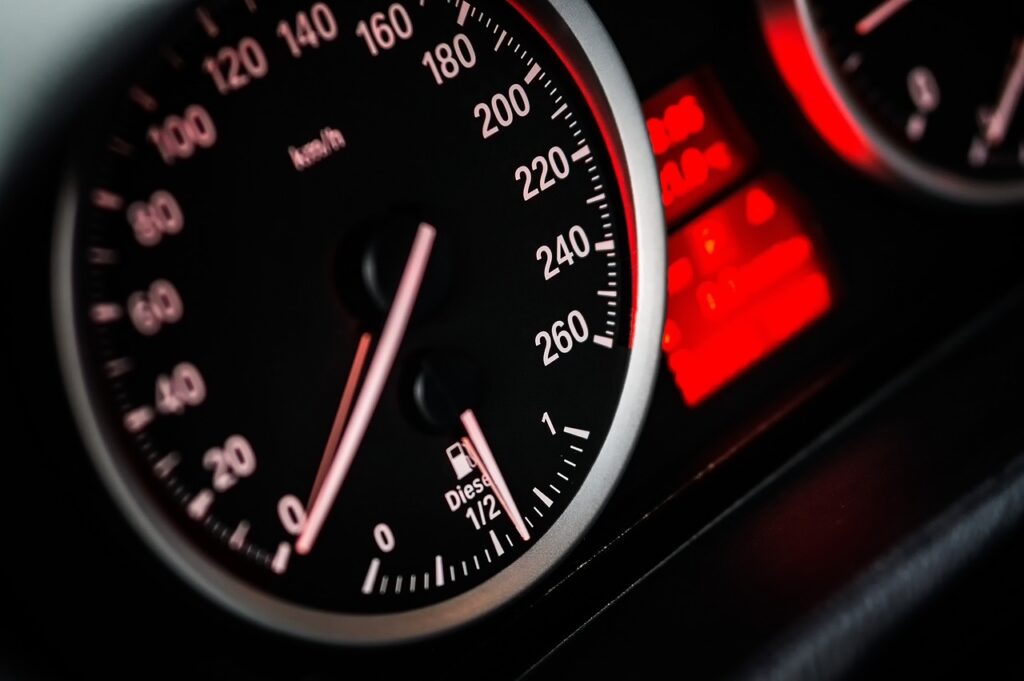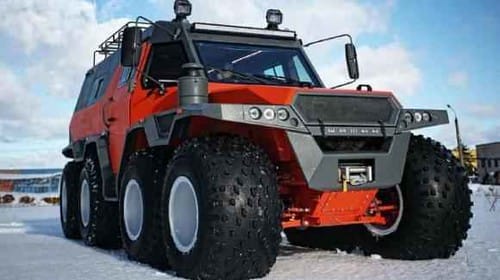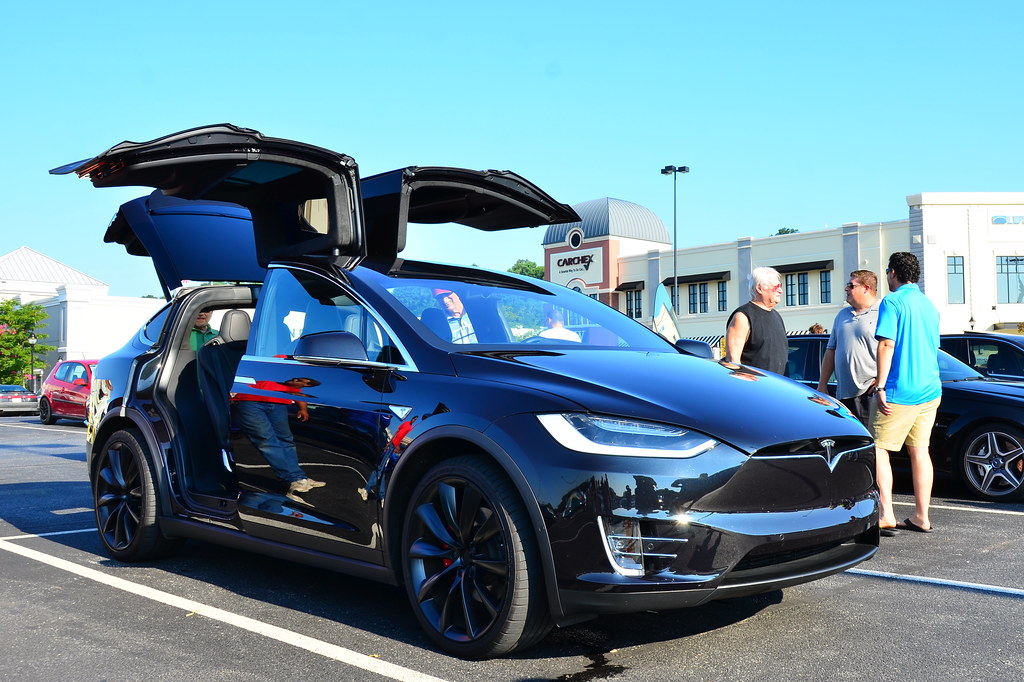
There’s a sweet spot in vehicle ownership, a period where you enjoy relatively trouble-free driving, building equity in your investment without major financial headaches. For most cars and trucks, this honeymoon extends comfortably beyond the manufacturer’s warranty, offering peace of mind and predictable running costs.
However, this idyllic period can abruptly end for certain vehicles once they cross a critical threshold: the 80,000-mile mark. What were once desirable, high-performing, or luxurious modes of transportation can transform into what owners affectionately — or perhaps, exasperatedly — call ‘financial black holes’ or ‘money pits.’ This isn’t about minor wear and tear; it’s about the onset of expensive component failures that were designed to last through the warranty but not necessarily much beyond.
Understanding which vehicles are most likely to make this costly transition is crucial, whether you’re a potential used car buyer hoping to snag a deal or a current owner planning your automotive future. The sophisticated engineering and premium features that make these SUVs and trucks so appealing when new often become their Achilles’ heel as they age, requiring specialized knowledge, expensive parts, and significant labor. Let’s explore some of the most notorious offenders that demand your attention and your wallet, particularly as they approach the 80,000-mile benchmark.
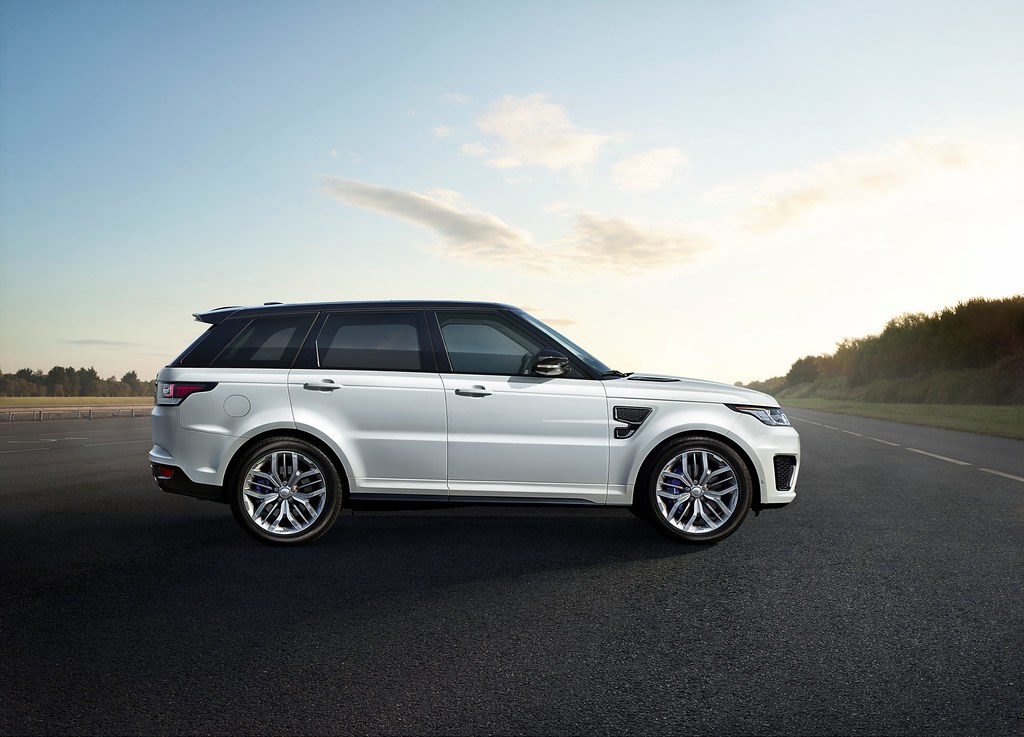
1. **Range Rover Sport (2014-2019)**The Range Rover Sport embodies the perfect fusion of luxury and formidable capability, allowing its owners to effortlessly navigate from the polished streets of the city to challenging off-road terrains. This impressive versatility, however, often comes with an equally impressive and often unsettling price tag, especially once the odometer sails past the 80,000-mile mark. Owners frequently face annual Land Rover maintenance costs that can soar to $12,000 or more, firmly establishing it as one of the automotive market’s most expensive luxury vehicles to maintain in its later life.
The vehicle’s Achilles’ heel frequently lies in its sophisticated air suspension system, a marvel of engineering that grants adjustable ride height and enables its renowned capability across varied landscapes. Regrettably, this complexity rapidly morphs into a significant liability as its components succumb to age and wear. Air suspension compressors, for instance, are notoriously prone to failure right around the 80,000-mile interval, with replacement costs that can easily exceed $3,000 before labor is even factored in.
Adding to this financial burden are the air springs themselves, which are equally problematic. Each individual air spring unit can cost upwards of $800, again before the mechanic even picks up a wrench. When these critical components decide to fail in concert, owners can suddenly find themselves staring down repair bills that approach or even exceed $10,000, simply to restore the vehicle’s proper ride height and fundamental functionality. It’s a stark reminder that advanced technology often comes with an advanced cost of upkeep.
Beyond the suspension, the Range Rover Sport’s advanced electronics pose another significant challenge for high-mileage owners. The vehicle is riddled with numerous control modules, meticulously managing everything from its terrain response systems to the integrated infotainment functions. These modules unfortunately show a propensity for failure and corruption over time, necessitating costly reprogramming or, more often, outright replacement. The central infotainment system, in particular, has developed a reputation for spontaneous failures, an issue that can set owners back $2,500 or more to properly rectify.
Engine problems are also a concern, varying depending on the specific powerplant under the hood, but all options present potential pitfalls. The supercharged V6 engines are known to suffer from timing chain stretch issues, a problem that, if not addressed swiftly and proactively, can culminate in catastrophic engine damage. Such timing chain repairs typically fall into a hefty range of $4,000 to $7,000, depending on the extent of the damage incurred. The more robust V8 engines, while powerful, grapple with their own set of challenges, including premature wear of valve guides and carbon buildup issues, both of which demand expensive and specialized cleaning procedures to maintain optimal performance and longevity.
Transmission reliability further compounds the worries for high-mileage Range Rover Sport owners. The eight-speed automatic transmission, lauded for its smoothness when operating correctly, has unfortunately demonstrated a predisposition for valve body failures and torque converter issues as miles accumulate. Complete transmission rebuilds or replacements can easily cost $8,000 or more, representing a substantial percentage of the vehicle’s residual value. It’s an unpredictable nature of failures, where multiple simultaneous problems can emerge, exponentially increasing repair costs.
Even the cooling system, a seemingly basic component, represents a significant vulnerability that becomes increasingly problematic after 80,000 miles. This sophisticated setup, designed to manage intense heat, includes multiple radiators, electric fans, and sensors that can fail independently or in a cascading fashion. Water pump failures are especially common and often occur without warning, risking catastrophic engine damage from overheating. Repair costs are typically $2,000 to $3,500, but engine damage can easily push bills beyond $15,000, while body control module failures manifest as electrical gremlins that worsen over time, costing over $2,500 for replacement and reprogramming.
Car Model Information: 2023 Honda Civic EX
Name: Range Rover Sport
Assembly: Solihull plant
Designer: Gerry McGovern
Manufacturer: Land Rover Ltd.,Jaguar Land Rover
Production: 2005–present
Class: Executive car,SUV
BodyStyle: SUV
Layout: Front-engine, four-wheel-drive
Successor: Range Rover (L460)
Categories: 2010s cars, 2020s cars, All-wheel-drive vehicles, All Wikipedia articles written in British English, All articles needing additional references
Summary: The Land Rover Range Rover Sport is a mid-size luxury SUV produced by the British manufacturer Land Rover, part of Jaguar Land Rover. Introduced in 2005 with the first-generation L320 model, it was succeeded by the second-generation L494 in 2013, and the third-generation L461 in 2022.
Get more information about: Range Rover Sport
Buying a high-performing used car >>>
Brand: Range Rover Model: Sport
Price: $23,541 Mileage: 56,979 mi.
Read more about: Beyond the Warranty: The 14 Trucks and Luxury SUVs That Become Costly Money Pits After Your Coverage Expires
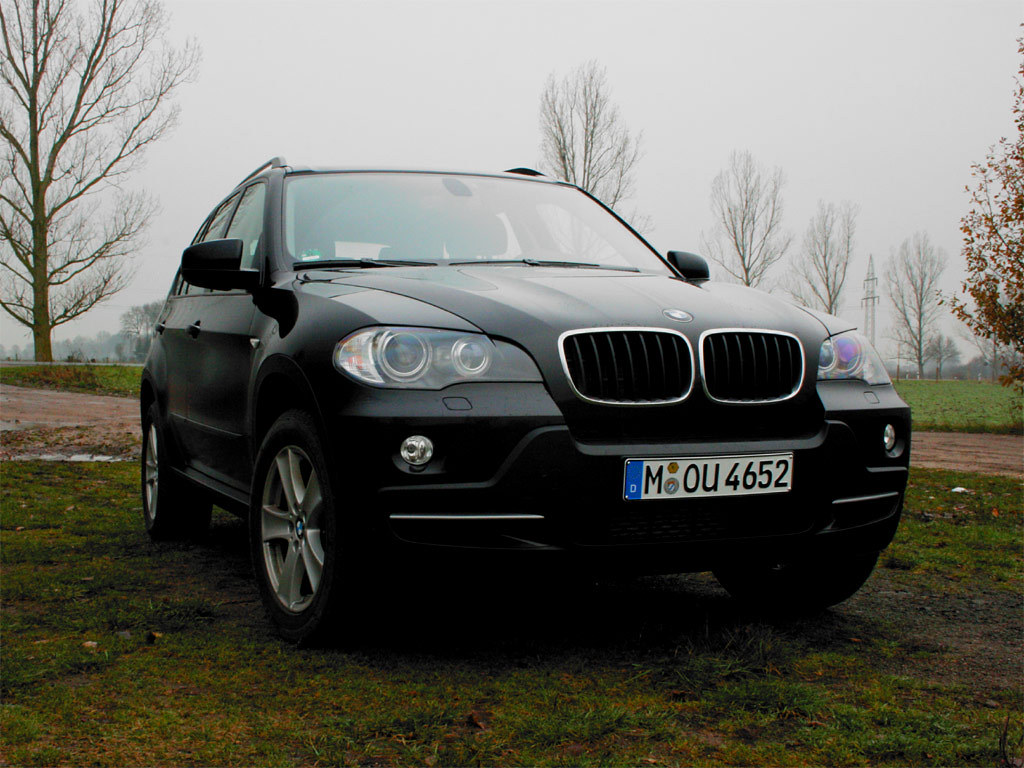
2. **BMW X5 (2014-2018)**The BMW X5 has long been celebrated as the epitome of German engineering, a vehicle that masterfully blends performance, luxury, and practicality, establishing itself as a benchmark in the luxury SUV segment. However, this dedication to engineering excellence comes with a significant caveat: BMW maintenance costs, which typically hover between $1,200 and $2,500 annually, can skyrocket once the vehicle ventures beyond the 80,000-mile mark. At this point, the X5 risks transforming from a coveted symbol of success into a substantial financial drain for its owners.
One of the X5’s most sophisticated features, its all-wheel-drive system, while initially offering exceptional traction and handling, ironically becomes a considerable liability as mileage steadily accumulates. The transfer case, which is responsible for judiciously distributing power between the front and rear axles, is particularly susceptible to failure right around the 80,000-mile threshold. Owners can expect to pay between $4,000 and $6,000 for a transfer case rebuild, while a complete replacement can easily exceed $8,000. The intricate nature of this system means that even seemingly minor failures often necessitate extensive disassembly, which in turn dramatically inflates labor costs.
BMW’s well-known commitment to integrating advanced technology, while appealing in new vehicles, frequently proves problematic as electronic components age and inevitably fail. The X5’s iDrive system, groundbreaking upon its introduction, has shown a troubling susceptibility to hard drive failures and software corruption, which can disable a multitude of crucial vehicle functions. Replacing the iDrive system can cost upwards of $3,500, and the complex programming requirements often add further layers of expense. Moreover, the vehicle’s numerous sensors and control modules, initially designed to enhance functionality, create numerous points of failure, leading to costly diagnostic sessions and subsequent component replacements.
The engine lineup within the X5 presents varying degrees of long-term reliability challenges, depending on the specific configuration. The turbocharged six-cylinder engines are known to suffer from high-pressure fuel pump failures, a critical issue that can leave drivers stranded and potentially cause serious engine damage. The typical cost for replacing these pumps ranges from $2,000 to $3,500, a figure that includes the necessary programming requirements. For those with the more powerful V8 engines, a unique set of challenges arises, primarily involving timing chain guide wear, which, if not proactively addressed, can lead to catastrophic engine damage that leaves owners facing monumental repair bills.
Furthermore, the optional air suspension, frequently found on higher trim levels, represents another significant financial pitfall. The air springs and compressors within this system have repeatedly proven unreliable, with failures commonly surfacing around the 80,000-mile mark. Replacing individual air springs can cost approximately $1,500 per corner, and a compressor failure can easily add another $2,000 to the already mounting repair bills. It’s not uncommon for many X5 owners to eventually opt for a conversion to more conventional springs and struts, a less expensive long-term solution, but one that unfortunately eliminates one of the X5’s signature luxury features.
Car Model Information: 2010 BMW X5 xDrive48i
Name: BMW X5
Manufacturer: BMW
Class: Mid-size,luxury vehicle,crossover SUV
BodyStyle: SUV
Production: 1999–present
Layout: Front-engine, four-wheel-drive layout,Front-engine, rear-wheel-drive layout
Categories: 2000s cars, 2010s cars, All-wheel-drive vehicles, All articles with unsourced statements, Articles with short description
Summary: The BMW X5 is a mid-size luxury crossover SUV produced by BMW. The X5 made its debut in 1999 as the E53 model. It was BMW’s first SUV. At launch, it featured all-wheel drive and was available with either a manual or automatic gearbox. The second generation was launched in 2006, and was known internally as the E70. The E70 featured the torque-split capable xDrive all-wheel drive system mated to an automatic gearbox. In 2009, the X5 M performance variant was released as a 2010 model.
BMW marketed the X5 officially as a “Sports Activity Vehicle” (SAV), rather than an SUV, to indicate its on-road handling capability despite its large dimensions. The X5 signaled a shift away from the utilisation of body-on-frame construction, in favour of more modern monocoque chassis construction. Although the Mercedes-Benz M-Class was introduced more than a year prior to the X5, the X5 was the first to utilise a monocoque chassis. The M-Class used body-on-frame construction until its second generation.
The X5 is primarily manufactured in North America, at BMW Group Plant Spartanburg. Assembly operations also took place in Russia by Avtotor until February 2022, along with operations in India, Indonesia, Malaysia, and Thailand. The X5 is also modified for armoured security versions, at the BMW de México Toluca plant.
The automaker’s SAV series, which was started by the X5, has expanded with derivations of other number-series BMWs. This began in 2003 with the X3, and continued in 2008 with the X6 (which shares its platform with the X5).
Get more information about: BMW X5
Buying a high-performing used car >>>
Brand: BMW Model: X5
Price: $8,963 Mileage: 101,541 mi.
Read more about: Beyond the Warranty: The 14 Trucks and Luxury SUVs That Become Costly Money Pits After Your Coverage Expires

3. **Mercedes-Benz GLE (2016-2019)**The Mercedes-Benz GLE stands as a testament to peak luxury SUV engineering, delivering a compelling combination of comfort, commanding performance, and cutting-edge technology that few rivals can genuinely match. Yet, this inherent sophistication carries a hidden cost, one that becomes starkly apparent once the odometer of a GLE sweeps past the 80,000-mile mark. While typical Mercedes-Benz maintenance costs generally range between $1,000 and $2,000 annually, these figures can dramatically multiply when major components inevitably begin to fail during the vehicle’s second decade of service.
At the heart of the GLE’s premium ride experience is its advanced air suspension system, branded as AIRMATIC, which provides exceptional ride quality and adjustable ground clearance, enhancing both comfort and off-road capability. Unfortunately, the very complexity that defines this system becomes its most significant weakness as its components age. Air springs commonly begin to develop leaks right around the 80,000-mile milestone, with individual replacement costs typically ranging from $1,200 to $2,000 per corner. The system’s compressor, vital for maintaining proper air pressure, frequently succumbs to failure around the same mileage interval, adding another $2,500 to the escalating repair costs. When multiple components in this intricate system fail in unison, owners can be confronted with air suspension repair bills that easily exceed $8,000.
The vehicle’s equally sophisticated electronics present another substantial hurdle for high-mileage owners. Mercedes-Benz integrates a myriad of control modules that govern a vast array of functions, from precise engine performance metrics to the nuanced cabin comfort systems. Electronic and sensor malfunctions, particularly those affecting advanced driver assistance features, demand meticulous recalibration or costly repairs. The central command system, which orchestrates infotainment and various vehicle settings, has unfortunately demonstrated a susceptibility to hard drive failures, an issue that can easily cost $3,000 or more to rectify.
Engine reliability within the GLE lineup shows considerable variation, largely dependent on the specific powerplant chosen. The turbocharged four-cylinder engines, while impressively efficient when operating correctly, are prone to turbocharger failures, typically manifesting around the 90,000-mile mark. Replacing a turbocharger can incur costs ranging from $3,000 to $5,000, a figure that includes associated componentry and the considerable labor involved. Furthermore, the V6 engines face their own unique challenge: timing chain stretch issues, which, if not promptly addressed, can lead to catastrophic engine damage, with repair costs often surpassing $6,000.
The GLE’s nine-speed automatic transmission, celebrated for its smoothness and responsiveness in normal operation, has regrettably proven problematic as mileage accumulates. Valve body failures and torque converter issues become increasingly prevalent after 80,000 miles, frequently necessitating complete transmission rebuilds that can cost $7,000 or more. The inherent complexity of this transmission means that even minor internal failures often mandate major repairs, given the integrated nature of its components. Additionally, while less frequent than in some other luxury SUVs, oil leaks remain a concern in high-mileage GLE models. The tightly packed engine bay makes oil leak repairs particularly expensive, as extensive disassembly is often required to access and replace failed seals and gaskets. Moreover, such leaks can damage nearby sensors and electronic components, creating a cascade of repair costs that quickly escalate beyond manageable limits.
Read more about: Beyond the Warranty: The 14 Trucks and Luxury SUVs That Become Costly Money Pits After Your Coverage Expires

4. **Audi Q7 (2016-2019)**The Audi Q7 epitomizes Germanic luxury SUV engineering at its most refined, delivering a harmonious blend of performance, cutting-edge technology, and practicality. It’s a compelling choice for discerning buyers who seek the ultimate family hauler, capable of handling diverse demands with sophisticated flair. However, this very sophisticated engineering, while impressive when new, quickly becomes a double-edged sword once the vehicle accumulates 80,000 miles. At this point, the Q7’s complex systems often begin experiencing failures that can rapidly transform it from a reliable mode of transportation into an expensive and ongoing maintenance nightmare.
Audi’s celebrated Quattro all-wheel-drive system provides the exceptional traction and handling characteristics that distinctly set the Q7 apart from many of its competitors. Unfortunately, the very complexity of this system gives rise to multiple potential failure points that become increasingly problematic as the mileage on the odometer climbs. The rear differential, in particular, has demonstrated a susceptibility to premature wear, with rebuilds typically incurring costs between $4,000 and $6,000. Similar challenges arise with the system’s center differential and its associated transfer case components, often requiring similarly expensive repairs or complete replacements right around the pivotal 80,000-mile threshold.
Furthermore, the Q7’s advanced air suspension system, a feature that provides outstanding ride quality and crucial load-leveling capabilities, represents one of the vehicle’s most expensive potential failure points. Air springs commonly begin to develop leaks around the 80,000-mile mark, with individual replacements costing approximately $1,500 per corner. The system’s compressor and its intricately associated control modules add further layers of complexity and expense, meaning that complete system failures frequently demand repair investments that can easily exceed $8,000. Such repairs are not merely inconvenient but represent a significant financial blow.
Engine reliability presents its own set of challenges, varying depending on the selected powerplant. The supercharged V6 engines are known to suffer from carbon buildup issues, a problem that necessitates expensive cleaning procedures every 40,000 to 60,000 miles. These crucial cleaning services typically range between $800 and $1,500, but they are absolutely essential for maintaining proper engine performance and preventing more severe issues down the line. The turbo diesel engines, while lauded for their efficiency, face unique challenges including diesel particulate filter failures and complex emissions system problems, which can result in repair costs that easily exceed $5,000, adding another layer of financial burden.
The Q7’s sophisticated electronics and infotainment systems, while impressively user-friendly and functional when new, create numerous potential failure points as their components age. The Multi Media Interface (MMI) system, in particular, has shown a notable susceptibility to hard drive failures and software corruption, issues that can disable a multitude of vital vehicle functions. A complete MMI replacement can cost upward of $4,000, and even seemingly minor software issues often require expensive dealer-specific programming procedures, further inflating the total cost of ownership. The integrated nature of the Q7’s systems means that a single component failure can cascade into related problems throughout the vehicle, creating compounding repair costs.
Car Model Information: 2023 Audi Q7 45 Premium Plus
Name: Audi Q7
Manufacturer: Audi AG
Production: November 2005–present
ModelYears: 2006–present
Class: Full-size,luxury SUV
BodyStyle: SUV
Layout: Longitudinal engine,front-engine, four-wheel-drive
Sp: uk
Categories: 2010s cars, 2020s cars, All-wheel-drive vehicles, All Wikipedia articles written in British English, All articles with dead external links
Summary: The Audi Q7 is a crossover SUV made by the German manufacturer Audi, unveiled in September 2005 at the Frankfurt Motor Show. Production of this seven-seater SUV began in November 2005 at the Volkswagen Bratislava Plant in Bratislava, Slovakia.
The Q7 was the first SUV sold by Audi and went on sale in 2006. Later, Audi’s second SUV, the Q5, was unveiled as a 2009 model. Audi has since unveiled a third SUV model, the Q3, which went on sale in the third quarter of 2011, and a fourth SUV model, the Q2, which went on sale in November 2016. The Q7 shares a Volkswagen Group MLB platform and chassis with the Bentley Bentayga, Lamborghini Urus, Porsche Cayenne and the Volkswagen Touareg.
The Q7 is the second largest vehicle from Audi, being surpassed by the Q6 since 2022. While the Q7 has been the flagship SUV in Audi’s product portfolio, a top-of-the-line model with a lower roof, called the Audi Q8, was released in 2018.
It was one of the vehicles involved in the Volkswagen emissions scandal, with the company ordered to buy back some of the affected cars manufactured between 2009 and 2012. The Q7 is also subject to hundreds of NTSB complaints with many relating to potentially catastrophic engine failure issues, and a class-action lawsuit related to squealing brakes.
Get more information about: Audi Q7
Buying a high-performing used car >>>
Brand: Audi Model: Q7
Price: $34,710 Mileage: 53,211 mi.
Read more about: Beyond the Warranty: The 14 Trucks and Luxury SUVs That Become Costly Money Pits After Your Coverage Expires

5. **Cadillac Escalade (2015-2020)**The Cadillac Escalade stands as America’s unapologetic answer to the European luxury SUV segment, delivering full-size capability enveloped in opulent appointments that have cemented its status as a favorite among celebrities and high-level executives alike. However, beneath its impressive and commanding exterior lies a collection of sophisticated systems that can quickly become financially problematic once the vehicle surpasses the 80,000-mile mark. At this point, what was once a symbol of success can rapidly transform into a potential money pit, capable of draining financial resources far faster than many owners might anticipate.
One of the Escalade’s standout features, its sophisticated Magnetic Ride Control suspension system, offers an exceptional blend of ride quality and precise handling characteristics that distinctly differentiate it from more conventional luxury SUVs. This advanced technology, however, evolves into a significant liability as its components age and eventually fail. Each individual magnetic damper can cost approximately $1,200 to replace, and the system’s unfortunate tendency toward multiple simultaneous failures can easily result in repair bills that exceed $6,000. Moreover, the inherent complexity of this system dictates that diagnosis itself requires specialized equipment, further contributing to the overall expense of any repair procedures.
General Motors’ strategic decision to integrate advanced electronics throughout the Escalade creates a multitude of potential failure points that become increasingly troublesome as the vehicle ages. The CUE infotainment system, while undeniably impressive in its functionality when new, has earned a less desirable reputation for spontaneous failures and perplexing software glitches that can disable a wide array of vehicle functions. A complete CUE system replacement can cost upwards of $3,500, and even what might seem like straightforward software updates frequently necessitate expensive dealer-specific programming procedures, adding to the ongoing financial burden.
The Escalade’s powerful V8 engines, while consistently delivering impressive performance and robust towing capability, present their own unique set of maintenance challenges as mileage accumulates. Failures within the Active Fuel Management (AFM) system have become increasingly common, often requiring extensive and costly repairs that can exceed $4,000. This system’s cylinder deactivation technology, initially designed to enhance fuel economy, inadvertently creates additional stress on critical engine components, and has proven to be particularly problematic in high-mileage applications, leading to premature wear and unexpected breakdowns.
Transmission reliability represents another significant concern for Escalade owners as their vehicles approach the 80,000-mile threshold. The six-speed automatic transmission, generally dependable during its warranty period, begins to experience valve body problems and torque converter failures with increasing frequency as mileage accrues. Complete transmission rebuilds typically fall within a hefty range of $5,000 to $7,000, a sum that constitutes a significant percentage of the vehicle’s remaining value. The numerous luxury features, while initially impressive, create additional points of failure, such as heated and cooled seats that commonly fail, or a panoramic sunroof system prone to motor and track problems costing $2,000 or more to repair. Even the power-operated third-row seating system frequently experiences malfunctions that can cost $1,500 or more to rectify, collectively adding to a long and costly list of potential repairs for Escalade owners.
Car Model Information: 2023 Cadillac Escalade Premium Luxury
Name: Cadillac Escalade
Caption: Fifth generation Cadillac Escalade
Manufacturer: Cadillac
Production: 1998–present,2002–present (ESV),2001–2013 (EXT),2008–2013 (Hybrid)
ModelYears: 1999–2000,2002–present
Class: Full-size,luxury car,sport utility vehicle
Related: ubl
Layout: Front-engine, rear-wheel drive layout,Front-engine, four-wheel drive layout
Categories: 2000s cars, 2010s cars, 2020s cars, All-wheel-drive vehicles, All Wikipedia articles in need of updating
Summary: The Cadillac Escalade is a full-size luxury SUV manufactured by General Motors and marketed by Cadillac as its first major entry into the SUV market. The Escalade was introduced for the 1999 model year in response to an influx of new luxury SUVs in the late 1990s including the Mercedes-Benz M-Class, Range Rover, Lexus LX, and Ford’s 1998 debut of the Lincoln Navigator. The Escalade project went into production only ten months after it was approved. The Escalade is built in Arlington, Texas.
The term “escalade” refers to a siege warfare tactic of scaling defensive walls or ramparts with the aid of ladders or siege towers. More generally, it is a French word which is the noun-equivalent form of the French verb escalader, which means “to climb or scale”.
The Escalade is currently sold in North America and select international markets (Europe and Asia) where Cadillac has official sales channels. The Escalade ESV (Escalade Stretch Vehicle) is sold in North America, Russia, and the Middle East, but is only available by special order in some international markets. The right-hand-drive Escalade and Escalade ESV are available through third-party conversion specialists without official agreement with Cadillac in Australian, Oceanic, and Japanese markets.
On August 8, 2023, GM presented the Escalade IQ, an all-electric version of the Escalade, and the third model in Cadillac’s EV line, after the Celestiq, and Lyriq. It is expected to go on sale in late 2024 for the 2025 model year, with a starting price of $130,000.
The Escalade has gone through five generations, the most recent (the fifth) prsented in 2021, noted for its technology and self-driving capability. The fifth generation Escalade is nearly two metres high, and was criticized by The Verge for its excessive size and hazard to pedestrians.
Get more information about: Cadillac Escalade
Buying a high-performing used car >>>
Brand: Cadillac Model: Escalade
Price: $62,995 Mileage: 44,458 mi.
Read more about: Buyer Beware: These 12 Crossovers Turn into Money Pits Past 80,000 Miles
_%E2%80%93_Frontansicht%2C_14._Juni_2014%2C_D%C3%BCsseldorf.jpg/1200px-Infiniti_Q50_S_HYBRID_(V37)_%E2%80%93_Frontansicht%2C_14._Juni_2014%2C_D%C3%BCsseldorf.jpg)
6. **Infiniti QX80 (2014-2019)**The Infiniti QX80 represents Japanese luxury engineering thoughtfully applied to the demanding full-size SUV segment, offering a distinctive blend of reliability-focused design principles and premium amenities. However, despite its Japanese heritage, which often suggests superior dependability, the QX80 has regrettably developed a reputation for becoming increasingly expensive to maintain once its odometer sails past 80,000 miles. Several key systems, in particular, have proven to be notably problematic as the vehicle gracefully, or not so gracefully, ages.
The QX80’s sophisticated all-wheel-drive system is engineered to provide exceptional traction and robust capability across a broad spectrum of driving conditions. Yet, this very complexity introduces potential financial challenges as its components inevitably age. The vehicle’s advanced transfer case, for instance, has demonstrated a concerning susceptibility to premature wear, a problem that is particularly pronounced in vehicles that have experienced a mix of demanding driving conditions. Transfer case rebuilds typically range between $4,500 and $6,500, while a complete replacement can easily exceed $8,000. The intricate nature of this system means that even seemingly minor failures often necessitate extensive diagnostic procedures, which in turn significantly inflate the overall repair costs.
Infiniti’s decision to incorporate a continuously variable transmission (CVT) in the QX80 has unfortunately generated long-term reliability concerns that become increasingly apparent right around the 80,000-mile mark. CVT technology, while capable of delivering smooth operation and improved fuel economy when functioning optimally, has regrettably proven problematic in high-mileage applications, especially when mated to a powerful V8 engine. Complete CVT replacements typically cost between $6,000 and $8,000, representing one of the most substantial potential repairs that QX80 owners may face. The transmission’s complexity also implies that even minor internal failures often mandate a complete unit replacement, leaving owners with few less expensive options.
The QX80’s powerful V8 engine, while generally a bastion of reliability during its initial warranty period, begins to experience its own set of problems as mileage steadily accumulates. Timing chain stretch has become an increasingly common issue, frequently resulting in noticeable engine noise and a degradation in performance that demands expensive repairs. A complete timing chain replacement can cost anywhere between $3,000 and $5,000, depending on the extent of any related damage that may have occurred. Additionally, the engine’s sophisticated variable valve timing system has shown a susceptibility to failure, often requiring costly component replacements and complex programming procedures to restore proper function.
Suspension system failures represent another significant concern for high-mileage QX80 owners. Although the vehicle doesn’t incorporate air suspension like many of its direct competitors, its sophisticated independent rear suspension system includes numerous components that are prone to failure as the vehicle ages. Rear suspension bushings and control arms commonly require replacement right around the 80,000-mile milestone, with complete rear suspension rebuilds frequently costing $3,000 or more. The QX80’s extensive electronic systems also create ongoing maintenance headaches; its advanced climate control system often fails, requiring $2,000+ for repairs, and the infotainment system is susceptible to hard drive failures or software corruption, potentially demanding a $3,500+ replacement. The sheer number of sensors and control modules adds to persistent diagnostic challenges, leading to expensive troubleshooting even for seemingly minor issues.
Car Model Information: 2023 INFINITI QX80 PREMIUM SELECT
Name: Infiniti QX80
Caption: 2019 Infiniti QX80 (US)
Manufacturer: Nissan
Aka: Infiniti QX56 (2004–2013)
Production: 2004–present
Class: Full-size,luxury SUV
BodyStyle: SUV
Layout: Front-engine, rear-wheel-drive,Front-engine, four-wheel-drive
Predecessor: Nissan Pathfinder#Infiniti QX4
Chassis: Body-on-frame
Categories: 2010s cars, 2020s cars, All-wheel-drive vehicles, All articles with failed verification, All articles with unsourced statements
Summary: The Infiniti QX80 (formerly called the Infiniti QX56 until 2013) is a full-size luxury SUV marketed by Nissan’s luxury division Infiniti since the 2004 model year. The first-generation QX56 was built in the United States and is based on the first-generation Armada. The second-generation model was released in 2010 as a model produced in Japan, which used the sixth-generation Patrol (later also marketed as the second-generation Armada since 2016) as the base vehicle instead. Since the 2014 model year in 2013, the vehicle was renamed to the QX80 as Infiniti renamed their entire product line under a new nomenclature.
Get more information about: Infiniti QX80
Buying a high-performing used car >>>
Brand: Infiniti Model: QX80
Price: $48,992 Mileage: 26,319 mi.
Read more about: Buyer Beware: These 12 Crossovers Turn into Money Pits Past 80,000 Miles
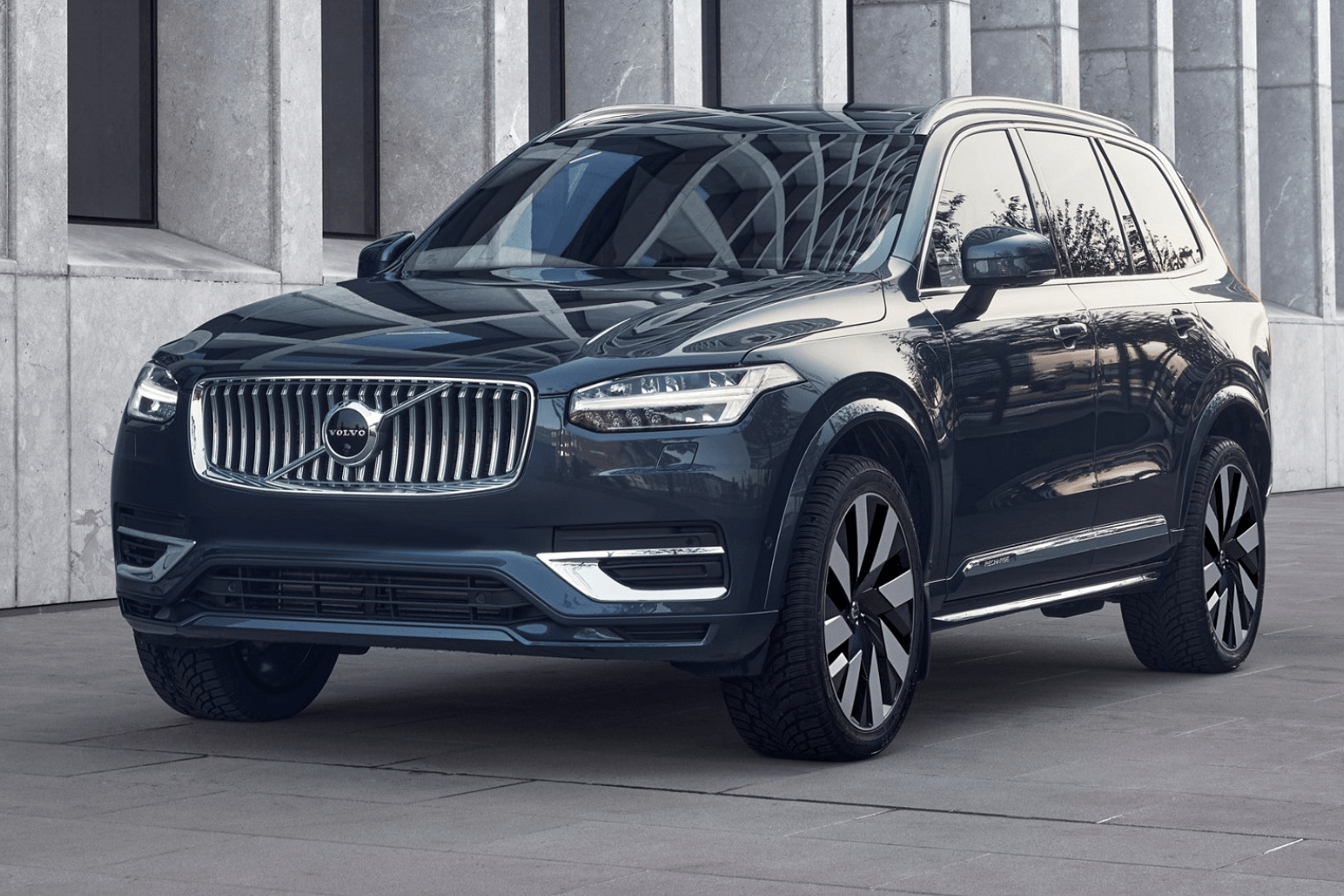
7. **Volvo XC90 (2016-2021)**The Volvo XC90 is a true embodiment of Swedish engineering excellence applied within the luxury SUV segment, presenting a distinctive combination of unparalleled safety, a commitment to sustainability, and sophisticated design that strongly appeals to environmentally conscious luxury buyers. However, despite Volvo’s long-standing global reputation for robustness and durability, the modern XC90 has regrettably proven problematic once its odometer surpasses the 80,000-mile mark. At this critical juncture, several of its key systems begin to demonstrate reliability issues that can culminate in surprisingly expensive repair bills for unsuspecting owners.
One of the XC90’s hallmark features, its advanced air suspension system, is designed to provide exceptional ride quality and crucial load-leveling capabilities, thereby enhancing both passenger comfort and the vehicle’s overall utility. Unfortunately, the inherent complexity of this system becomes an escalating problem as its components inevitably age and fail. Air springs typically begin to develop leaks right around the 80,000-mile milestone, with individual replacements costing approximately $1,800 per corner. The system’s compressor and its intricately associated electronic controls further compound the complexity and expense, meaning that complete system failures can often necessitate repair investments that easily exceed $9,000, representing a significant financial blow.
Volvo’s steadfast commitment to pioneering advanced powertrain technology has resulted in engines that, while undeniably impressive in their performance when functioning optimally, can become prohibitively expensive to maintain as mileage steadily accumulates. The turbocharged and supercharged four-cylinder engines, for instance, are known to suffer from carbon buildup issues, a problem that demands expensive cleaning procedures roughly every 50,000 to 60,000 miles. These specialized services typically cost between $1,000 and $1,800, but they are absolutely essential for maintaining proper engine performance and preventing more severe, costly issues down the line. Additionally, the engines’ sophisticated charging systems have demonstrated a concerning susceptibility to premature failure, often requiring expensive component replacements.
The XC90’s advanced all-wheel-drive system, while delivering exceptional traction and precise handling characteristics, introduces potential financial challenges as its various components age. The rear drive module, which is tasked with efficiently distributing power to the rear wheels, has proven to be particularly problematic, with failures commonly occurring around the 90,000-mile mark. A complete rear drive module replacement can cost anywhere between $5,000 and $7,000, a sum that includes all associated programming and calibration procedures, which are often highly specialized. This level of repair is a significant unexpected cost for owners.
Electronic system reliability represents another significant concern for XC90 owners as their vehicles approach high-mileage status. Volvo’s Sensus infotainment system, while advanced and commendably user-friendly when functioning correctly, has unfortunately demonstrated a susceptibility to software corruption and even outright hardware failures. A complete system replacement can cost upward of $4,000, and even seemingly minor software issues often necessitate expensive dealer-specific programming procedures, adding to the ongoing financial burden. Furthermore, the vehicle’s numerous driver assistance systems create continuous maintenance challenges, with complex sensor calibration and replacement procedures frequently costing $1,500 or more per incident. Perhaps most frustrating for XC90 owners is the vehicle’s propensity for experiencing perplexing electrical problems that can be notoriously difficult and expensive to accurately diagnose. The vehicle’s intricate wiring harnesses and sophisticated control modules introduce countless potential failure points that can result in intermittent problems, demanding extensive diagnostic procedures. These elusive electrical gremlins often evade easy identification, leading to multiple costly dealer visits and accumulating diagnostic charges, even when the underlying problems are relatively minor.
Continuing our exploration into vehicles that can transform into costly money pits once they hit the 80,000-mile mark, we now turn our attention to another powerful American luxury SUV before shifting focus to a selection of popular American and Japanese pickup trucks. These vehicles, while appealing for their performance, luxury, or utility when new, often hide significant financial liabilities that emerge as they age, demanding careful consideration from both prospective buyers and current owners. Understanding these specific vulnerabilities is key to avoiding unexpected and substantial repair bills down the road.
Car Model Information: 2016 Volvo XC90 T6 Momentum
Name: Volvo XC90
Caption: 2025 Volvo XC90
Manufacturer: Volvo Cars
Production: 2002–present
Class: Executive car,crossover SUV
BodyStyle: SUV
Layout: ubl
Categories: 2010s cars, 2020s cars, All-wheel-drive vehicles, All articles with dead external links, All articles with unsourced statements
Summary: The Volvo XC90 is a mid-size luxury SUV manufactured and marketed by Volvo Cars since 2002 and in its second generation.
The first generation was introduced at the 2002 North American International Auto Show and used the Volvo P2 platform shared with the first generation Volvo S80 and other large Volvo cars. It was manufactured at Volvo’s Torslandaverken in Sweden. Volvo moved production equipment of the first generation to China and ended Swedish production at the end of 2014, renaming the car as the Volvo XC Classic (or Volvo XC90 Classic).
At the end of 2014, the second generation XC90 was introduced. It is based on a new global platform, the Scalable Product Architecture (SPA). Both generations of the XC90 have won Motor Trend’s SUV of the Year award in their debuts.
In late 2022, the electric-only EX90 was introduced as the successor of the XC90. However, in September 2024, Volvo launched the second facelift of XC90, and stated that both models would be sold together for the foreseeable future.
Get more information about: Volvo XC90
Buying a high-performing used car >>>
Brand: Volvo Model: XC90
Price: $6,750 Mileage: 171,243 mi.
Read more about: Buyer Beware: These 12 Crossovers Turn into Money Pits Past 80,000 Miles

8. **Jeep Grand Cherokee SRT (2014-2021)**The Jeep Grand Cherokee SRT is an icon of American performance, blending supercar-level acceleration with the everyday practicality of an SUV. For enthusiasts, it offers an unparalleled driving experience. However, this impressive performance capability comes with a hidden cost, one that becomes increasingly apparent and heavy on the wallet once the vehicle sails past the 80,000-mile mark. The very components that deliver its exhilarating ride begin to experience failures, quickly turning the SRT from a thrill ride into a maintenance nightmare that can drain your finances.
The powerful 6.4-liter Hemi V8 engine, the heart of the SRT’s performance, presents significant maintenance challenges as mileage accumulates. Its sophisticated variable valve timing system, crucial for maximizing output, is particularly susceptible to failure. These issues often necessitate expensive component replacements that can easily cost $3,000 or more to rectify. Furthermore, the engine’s high-performance nature places additional stress on internal components, leading to premature wear of parts like pistons, rings, and bearing surfaces, which can unfortunately demand expensive engine rebuilds right around the 100,000-mile threshold.
Stopping power for the SRT comes from a high-performance Brembo braking system, which, while exceptional, introduces ongoing expenses far beyond typical SUV maintenance. A complete service involving brake pad and rotor replacements can easily set owners back upwards of $2,500. Adding to this, the system’s sophisticated electronic controls bring additional layers of complexity and cost. Due to its performance-oriented design, these braking components wear out more rapidly than conventional systems, necessitating more frequent and costly service intervals, which can quickly add up over time.
Similarly, maintaining the SRT’s specialized suspension system represents another substantial expense for owners as the miles pile on. The vehicle’s performance-tuned suspension incorporates numerous specialized components that are inherently more expensive to replace than those found in standard SUVs. For instance, the adaptive dampers commonly require replacement around the 80,000-mile mark, with each individual unit costing approximately $800. The suspension’s intricate electronic controls also create additional potential failure points, leading to complex and expensive diagnostic and repair procedures whenever issues arise.
Transmission reliability also becomes a significant concern as SRT models accumulate mileage. The eight-speed automatic transmission, generally dependable during its initial warranty period, begins to show signs of stress under the demands of high-performance operation. Torque converter failures and valve body problems become increasingly common after 80,000 miles, frequently requiring complete transmission rebuilds that can cost $6,000 or more. The transmission’s specific performance calibration also means that even minor internal wear can result in noticeable performance degradation, making expensive repairs a necessity to maintain the vehicle’s driving dynamics.
Car Model Information: 2023 Honda Civic EX
Name: Jeep Grand Cherokee
Manufacturer: Jeep
Production: 1992–present
ModelYears: 1993–present
Class: unbulleted list
BodyStyle: sport utility vehicle
Layout: unbulleted list
Chassis: Vehicle_frame#Uniframe
Categories: 2000s cars, 2010s cars, 2020s cars, All-wheel-drive vehicles, All Wikipedia articles written in American English
Summary: The Jeep Grand Cherokee is a range of mid-sized sport utility vehicles produced by American manufacturer Jeep. At its introduction, while most SUVs were still manufactured with body-on-frame construction, the Grand Cherokee has used a unibody chassis from the start.
Get more information about: Jeep Grand Cherokee
Buying a high-performing used car >>>
Brand: Jeep Model: Grand Cherokee SRT
Price: $23,541 Mileage: 56,979 mi.
Read more about: Buyer Beware: These 12 Crossovers Turn into Money Pits Past 80,000 Miles

9. **Ford F-150 (2004-2008)**The Ford F-150 has long reigned as one of America’s most popular pickup trucks, cherished for its versatility and utility. However, certain model years, specifically those between 2004 and 2008, have developed a less desirable reputation for becoming costly money pits once they surpass the 80,000-mile mark. What was once a dependable workhorse can quickly transform into a source of significant financial strain, highlighting the importance of thorough inspection before purchase or proactive maintenance if you already own one.
One of the most widely reported and frustrating issues with these F-150 models revolves around spark plug failures. The design of these spark plugs can lead to them breaking during removal, which necessitates extensive and costly repair procedures to extract the broken components from the engine cylinders. This common problem can quickly escalate from a routine maintenance task into a several-hundred-dollar or even thousand-dollar repair, significantly impacting the owner’s budget and peace of mind.
Beyond spark plugs, transmission problems are another major concern for the 2004-2008 F-150s. The National Highway Traffic Safety Administration (NHTSA) has recorded numerous complaints regarding transmission reliability, pointing to a systemic issue rather than isolated incidents. Owners frequently report experiencing erratic shifting, delayed engagements, and outright transmission failures, which can lead to substantial repair or replacement costs. These unexpected expenses can easily make an F-150 a burdensome vehicle to own once it’s well into its higher mileage.
Read more about: Beyond the Warranty: The 14 Trucks and Luxury SUVs That Become Costly Money Pits After Your Coverage Expires

10. **Dodge Ram 1500 (2002-2008)**The Dodge Ram 1500, particularly models from 2002 to 2008, gained recognition for its powerful engine options and bold styling, appealing to many truck buyers. Yet, beneath this rugged exterior lies a propensity for costly issues that can emerge with alarming frequency once the odometer ticks past 80,000 miles. For potential used truck buyers, and even current owners, being aware of these common pitfalls is vital to prevent this powerful vehicle from becoming a never-ending financial drain.
Among the most frustrating problems reported by owners are costly electrical issues. These can manifest in various ways, from persistent warning lights on the dashboard to malfunctions in critical vehicle systems. Tracing and resolving electrical gremlins often requires specialized diagnostic equipment and considerable labor hours, leading to significant repair bills. These issues can impact everything from the infotainment system to essential engine sensors, collectively creating a substantial financial burden for high-mileage owners.
Another frequent complaint centers on premature brake wear. While all vehicles require brake maintenance, the 2002-2008 Dodge Ram 1500 models seem to go through brakes at an accelerated rate. This isn’t just about replacing pads; it often involves replacing rotors more frequently than expected, especially for those who use their truck for towing or heavy hauling. The constant need for expensive brake jobs can significantly inflate ongoing maintenance costs, leading many owners to report spending a disproportionate amount on repairs shortly after purchasing these trucks.
Car Model Information: 2023 Honda Civic EX
Name: Dodge Ram / Ram pickup
Caption: 2017 Ram 1500 Express
Manufacturer: Dodge
ModelYears: 1981–present
Production: October 1980 – present
Class: Pickup truck#Full-size pickup truck,Pickup truck#Heavy-duty pickup truck
Layout: Front-engine, rear-wheel-drive layout,rear-wheel drive
Predecessor: Dodge D series
Categories: 1990s cars, 2000s cars, 2010s cars, 2020s cars, All-wheel-drive vehicles
Summary: The Ram pickup (marketed as the Dodge Ram until 2010 when Ram Trucks was spun-off from Dodge) is a full-size pickup truck manufactured by Stellantis North America (formerly Chrysler Group LLC and FCA US LLC) and marketed from 2010 onwards under the Ram Trucks brand. The current fifth-generation Ram debuted at the 2018 North American International Auto Show in Detroit, Michigan, in January of that year.
Previously, Ram was part of the Dodge line of light trucks. The Ram name was introduced in October 1980 for model year 1981, when the Dodge D series pickup trucks and B series vans were rebranded, though the company had used a ram’s-head hood ornament on some trucks as early as 1933.
Ram trucks have been named Motor Trend magazine’s Truck of the Year eight times; the second-generation Ram won the award in 1994, the third-generation Ram heavy-duty won the award in 2003, the fourth-generation Ram Heavy Duty won in 2010 and the fourth-generation Ram 1500 won in 2013 and 2014, and the current fifth-generation Ram pickup became the first truck in history to win the award four times, winning in 2019, 2020, 2021 and most recently, 2025.
Get more information about: Ram pickup
Buying a high-performing used car >>>
Brand: Dodge Model: Ram 1500
Price: $23,541 Mileage: 56,979 mi.
Read more about: Beyond the Warranty: The 14 Trucks and Luxury SUVs That Become Costly Money Pits After Your Coverage Expires
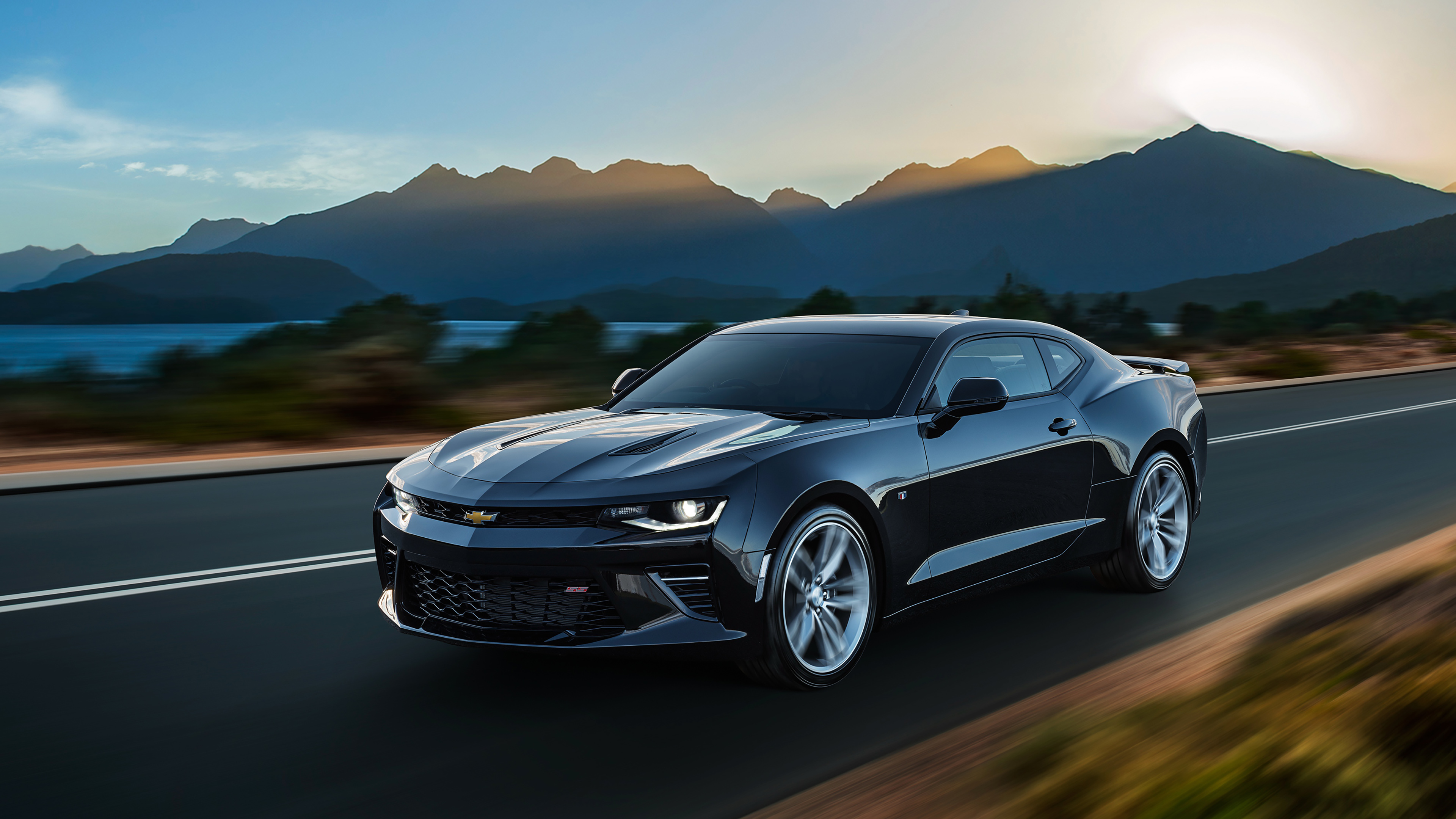
11. **Chevrolet Silverado 1500 (2007-2014)**Often considered a cornerstone of reliability and capability in the full-size pickup segment, the Chevrolet Silverado 1500, specifically models from 2007 to 2014, can surprisingly become a financial headache once it reaches the 80,000-mile mark. While generally a sturdy truck, specific vulnerabilities tend to surface at higher mileages, turning what was once a dependable workhorse into a vehicle that demands frequent and expensive attention.
One of the most critical and costly issues associated with these Silverado models is transmission failures. Owners frequently report that transmissions can begin to act erratically or fail outright as mileage accumulates, often requiring extensive repairs or complete replacements. Such repairs are never cheap, typically ranging into several thousands of dollars, representing a significant and often unexpected expense that can quickly erode the truck’s residual value and the owner’s budget.
Furthermore, costly fuel pump replacements are another common problem that can afflict high-mileage Chevrolet Silverado 1500s. A failing fuel pump can lead to stalling, rough idling, or a complete inability to start the vehicle. Given the labor involved in accessing and replacing these components, coupled with the cost of the part itself, owners can find themselves facing substantial bills. These unexpected expenses can quickly turn what was considered a reliable vehicle into a frustrating and costly investment.
Car Model Information: 2023 Honda Civic EX
Name: Chevrolet Silverado/GMC Sierra
Caption: 2022 Silverado 2500HD High Country
Manufacturer: General Motors
Aka: unbulleted list
Production: 1998–present
Assembly: unbulleted list
Class: unbulleted list
BodyStyle: unbulleted list
Layout: unbulleted list
Predecessor: unbulleted list
Categories: 2000s cars, 2010s cars, 2020s cars, All-wheel-drive vehicles, All Wikipedia articles written in American English
Summary: The Chevrolet Silverado is a range of trucks manufactured by General Motors under the Chevrolet brand. Introduced for the 1999 model year, the Silverado is the successor to the long-running Chevrolet C/K model line. Taking its name from the top trim level from the Chevrolet C/K series, the Silverado is offered as a series of full-size pickup trucks, chassis cab trucks, and medium-duty trucks. The fourth generation of the model line was introduced for the 2019 model year.
The Chevrolet Silverado shares mechanical commonality with the identically related GMC Sierra; GMC ended the use of the C/K nomenclature a model generation prior to Chevrolet. In Mexico, high-trim level versions of the Silverado use the Chevrolet Cheyenne name (not to be confused with the 2003 concept). Competing against the Ford F-Series, Ram pickup, Toyota Tundra, and Nissan Titan, the Silverado is among the best-selling vehicles in the United States, having sold over 12 million trucks since its introduction in 1998 as a 1999 model year.
Get more information about: Chevrolet Silverado
Buying a high-performing used car >>>
Brand: Chevrolet Model: Silverado 1500
Price: $23,541 Mileage: 56,979 mi.
Read more about: Beyond the Warranty: The 14 Trucks and Luxury SUVs That Become Costly Money Pits After Your Coverage Expires
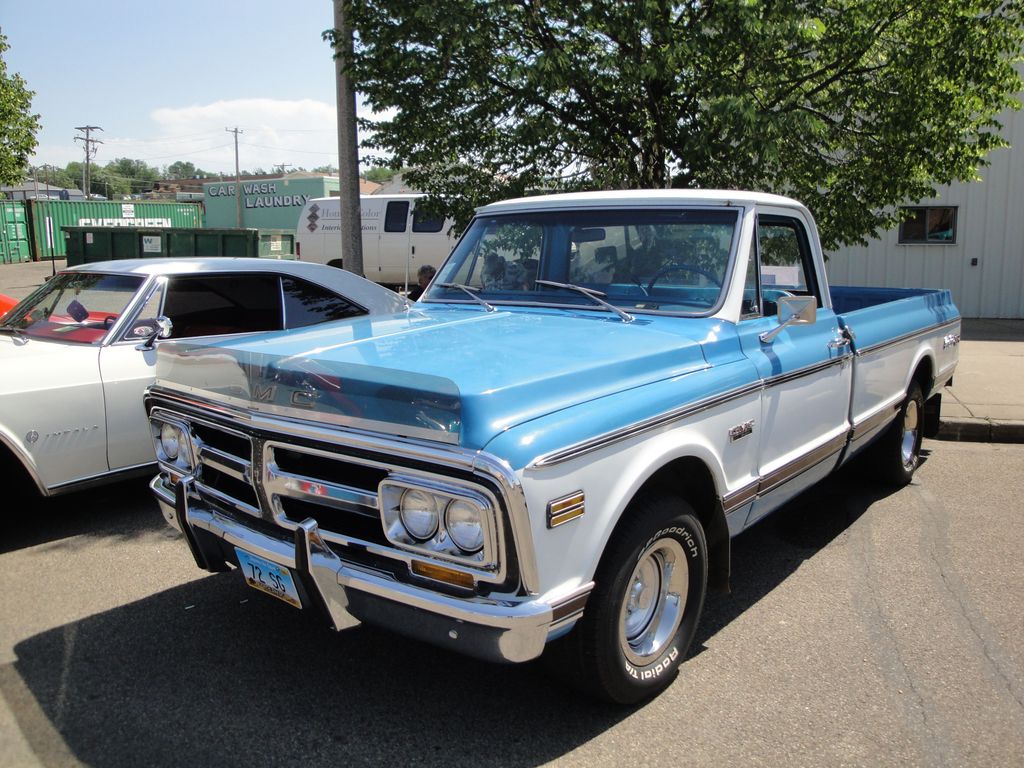
12. **GMC Sierra 1500 (2007-2014)**Sharing much of its underlying architecture with its Chevrolet counterpart, the GMC Sierra 1500 from the 2007-2014 model years likewise presents a similar set of challenges for owners once it surpasses 80,000 miles. Despite its reputation as a premium and capable truck, these particular Sierras have demonstrated a propensity for issues that can quickly lead to escalating repair bills, making them potential money pits if not carefully managed or avoided in the used market.
Among the significant concerns for these high-mileage Sierra models are widespread fuel system issues. This can encompass a range of problems, from faulty fuel injectors to issues with the fuel pressure regulator or fuel lines. Such failures can impact engine performance, fuel efficiency, and even vehicle safety, often requiring specialized diagnosis and expensive component replacements. These issues are not merely minor inconveniences but can lead to substantial financial outlays to restore proper functionality.
In addition to fuel system woes, the GMC Sierra 1500 also exhibits problems with its electrical components as it ages. These can include anything from wiring harness deterioration to failures in various sensors and control modules that govern critical truck functions. Electrical problems are notoriously difficult and time-consuming to diagnose, meaning that even seemingly minor glitches can result in high labor costs. Owners frequently find repair bills for these electrical issues escalating rapidly, contributing significantly to the overall cost of ownership.
Read more about: Beyond the Warranty: The 14 Trucks and Luxury SUVs That Become Costly Money Pits After Your Coverage Expires
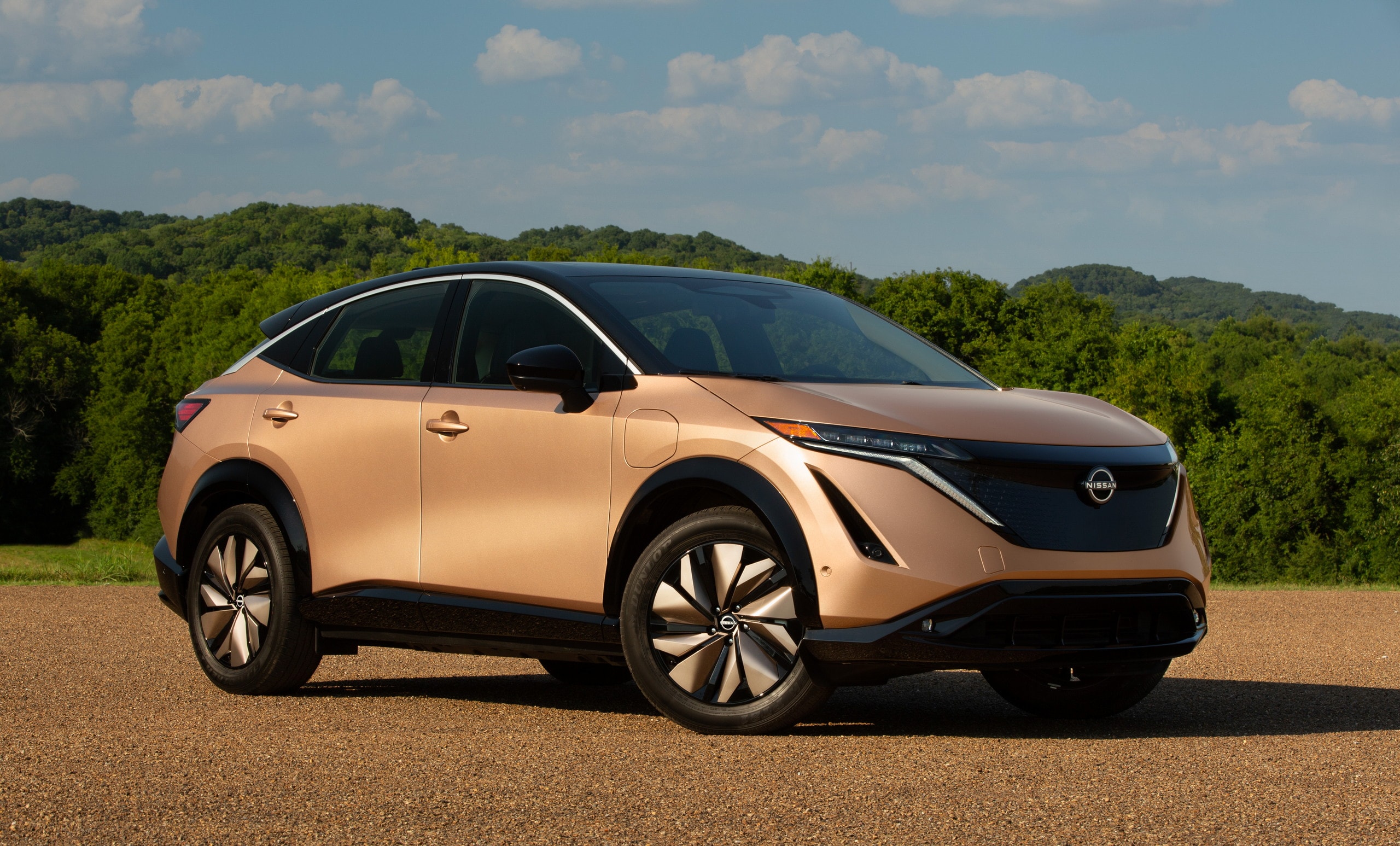
13. **Nissan Titan (2004-2015)**The Nissan Titan, produced between 2004 and 2015, established itself as a robust and capable full-size pickup truck, offering an alternative to the dominant American brands. However, its reputation for reliability begins to fray significantly once it crosses the 80,000-mile threshold, with a clear pattern of costly engine and transmission problems emerging. Despite its tough exterior, owners of these high-mileage Titans often report facing substantial and ongoing maintenance expenses that can make ownership a financial burden.
Engine problems are a primary concern for these older Nissan Titan models. While the V8 engine is powerful, it has been linked to issues such as exhaust manifold failures, which can be expensive to repair due to the labor involved in accessing and replacing them. More critically, some owners have reported more severe engine issues that can lead to significant internal component wear or even complete engine failure if not addressed. These engine-related repairs are almost always among the most expensive an owner can face.
Adding to the financial strain are persistent transmission problems. The transmission in the 2004-2015 Titan models has shown a susceptibility to premature wear and failure, particularly in trucks that have been used for towing or heavy hauling. Symptoms can range from harsh shifting and slipping to complete transmission breakdown. Given the complexity and cost of transmission repair or replacement, this issue alone can lead to exorbitant maintenance expenses, firmly cementing the Titan’s place on the list of potential money pits.
Car Model Information: 2018 Nissan Titan SV
Name: Nissan Titan
Manufacturer: Nissan
Production: September 2003 – November 2024
ModelYears: 2004–2024
Assembly: Canton, Mississippi
Class: Pickup_truck#Full-size_pickup_truck
BodyStyle: 2-door pickup truck,4-door pickup truck
Layout: Front-engine, rear-wheel-drive layout
Platform: Nissan F-Alpha
Caption: 2021 Nissan Titan Crew Cab PRO-4X (Canada)
Categories: 2010s cars, 2020s cars, All-wheel-drive vehicles, All articles with unsourced statements, Articles with short description
Summary: The Nissan Titan was a full-size pickup truck manufactured in the United States for the North American market by Nissan, produced for the 2004–2024 model years.
Get more information about: Nissan Titan
Buying a high-performing used car >>>
Brand: Nissan Model: Titan
Price: $21,685 Mileage: 89,835 mi.
Read more about: Beyond the Warranty: The 14 Trucks and Luxury SUVs That Become Costly Money Pits After Your Coverage Expires

14. **Toyota Tundra (2007-2014)**Toyota’s reputation for unwavering reliability is legendary, making the identification of any Toyota model as a potential money pit a surprising revelation. However, specific generations of the Toyota Tundra, particularly those manufactured between 2007 and 2014, have developed a notoriety for certain costly issues that tend to surface once they’ve accumulated over 80,000 miles. While the Tundra remains a capable truck, prospective buyers and current owners need to be aware of these specific vulnerabilities to avoid significant financial drains.
One of the most significant and alarming issues reported for these Tundra models is severe frame rust. This isn’t merely surface corrosion; it can lead to structural integrity concerns that compromise the truck’s safety and longevity. Repairing extensive frame rust is a highly complex and expensive undertaking, often costing thousands of dollars, and in severe cases, it can render the truck uneconomical to repair. This problem is particularly prevalent in regions with harsh winter conditions where road salt is used, accelerating the deterioration.
Beyond structural concerns, excessive oil consumption is another well-documented problem for the 2007-2014 Toyota Tundra’s engine. While some oil consumption is normal, these models can exhibit consumption rates far beyond what is acceptable, necessitating frequent top-offs and constant monitoring. If left unchecked, excessive oil consumption can lead to premature engine wear, reduced lubrication, and ultimately, costly internal engine damage. Addressing the root cause often involves significant engine work, adding to the Tundra’s unexpected repair bills.
Car Model Information: 2024 Toyota Tundra Limited
Name: Toyota Tundra
Manufacturer: Toyota
Production: May 1999 – present
ModelYears: 2000–present
Assembly: San Antonio,Texas
Class: Pickup truck#Full-size pickup truck
Layout: unbulleted list
Related: Toyota Sequoia
Predecessor: Toyota T100
Caption: 2022 Toyota Tundra Limited
Categories: 2000s cars, 2010s cars, 2020s cars, All-wheel-drive vehicles, All Wikipedia articles written in American English
Summary: The Toyota Tundra is a full-size pickup truck manufactured in the United States by the Japanese manufacturer Toyota since May 1999. The Tundra was the second full-size pickup to be built by a Japanese manufacturer (the first was the Toyota T100), but the Tundra was the first full-size pickup from a Japanese manufacturer to be built in North America. The Tundra was nominated for the North American Truck of the Year award and was Motor Trend magazine’s Truck of the Year in 2000 and 2008. Initially built in a new Toyota plant in Princeton, Indiana, production was consolidated in 2008 to Toyota’s San Antonio, Texas, factory.
Get more information about: Toyota Tundra
Buying a high-performing used car >>>
Brand: Toyota Model: Tundra
Price: $49,565 Mileage: 29,512 mi.
Read more about: Beyond the Warranty: The 14 Trucks and Luxury SUVs That Become Costly Money Pits After Your Coverage Expires
For any vehicle, hitting the 80,000-mile mark is a significant milestone. For the models we’ve explored, however, it can often signal a critical juncture where the cost of ownership rapidly escalates, transforming desirable vehicles into unforeseen financial burdens. Whether you’re in the market for a used SUV or truck, or simply planning the future of your current high-mileage ride, a proactive approach and a thorough understanding of these common pitfalls can literally save you thousands of dollars and countless headaches. Knowledge, in this instance, isn’t just power—it’s serious money in your pocket.

